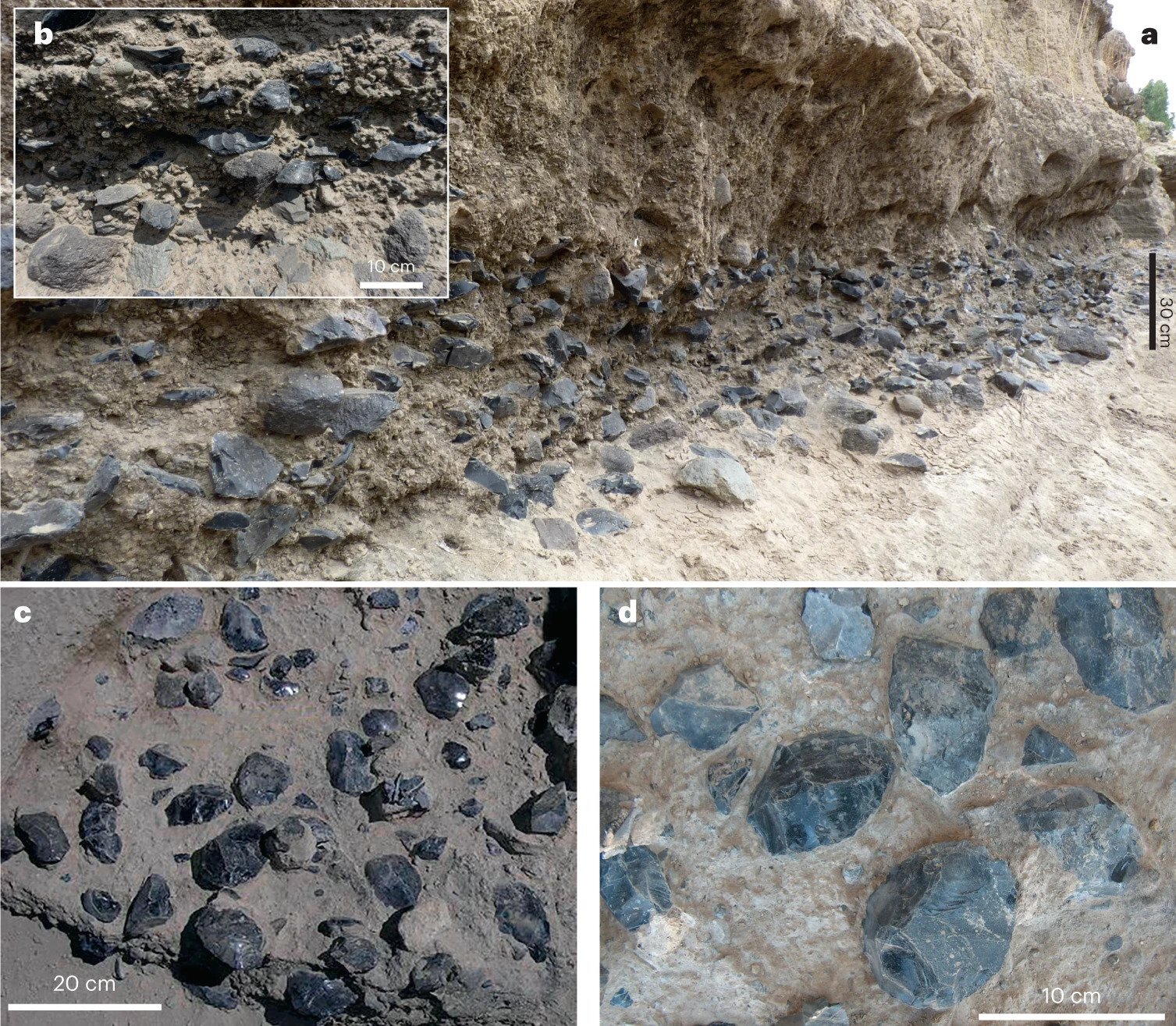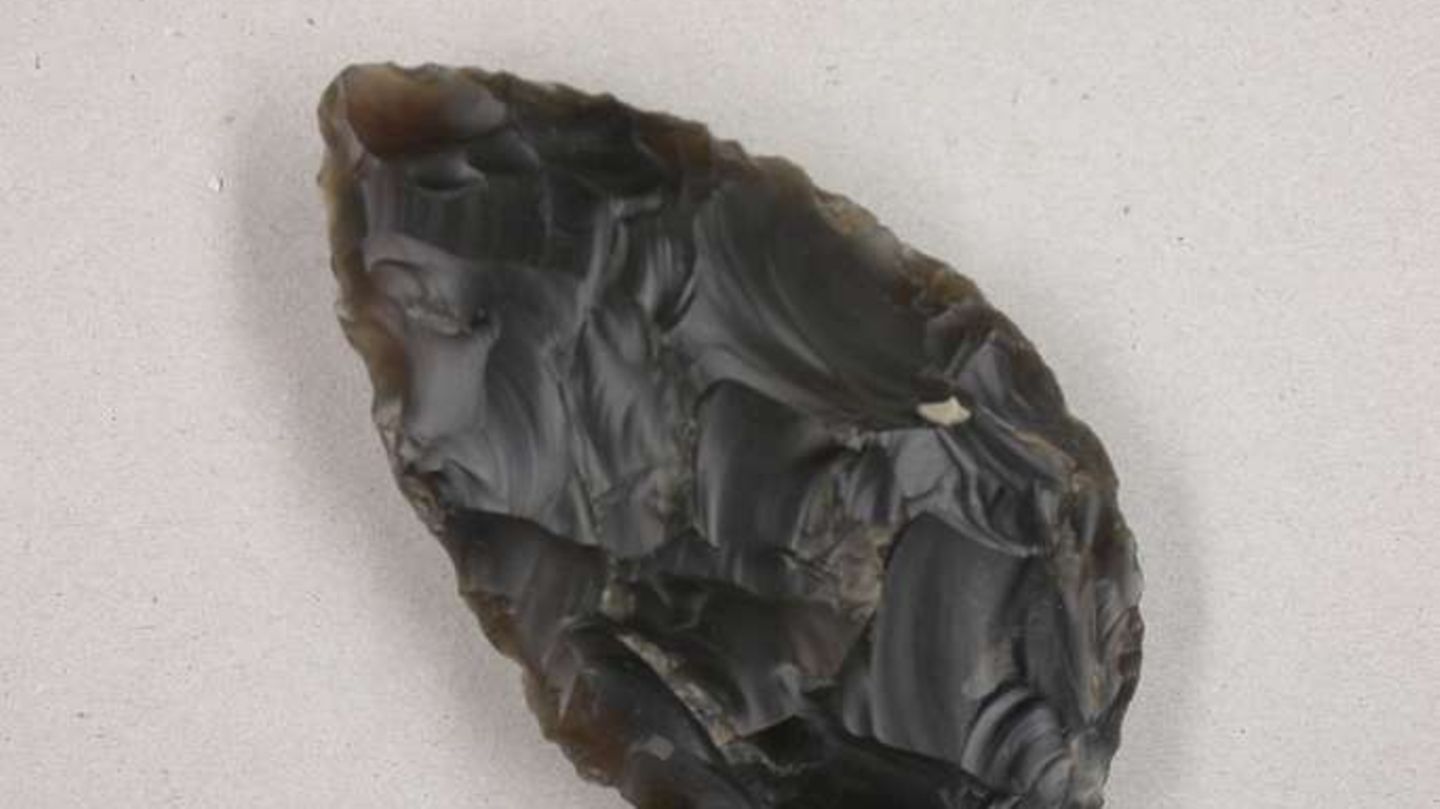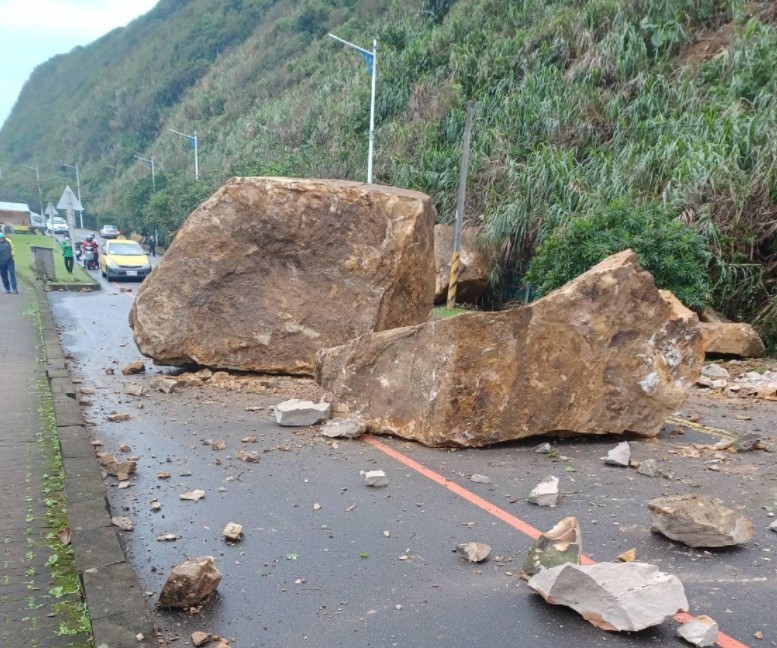Here the full article (I know it has no value for the barking crowd of Mereja Forum, nor for that of Washington DC), but still opted to post it for a reference in the future, from Nature.
Pleistocene archaeology records the changing behaviour and capacities of early hominins. These behavioural changes, for example, to stone tools, are commonly linked to environmental constraints. It has been argued that, in earlier times, multiple activities of everyday life were all uniformly conducted at the same spot. The separation of focused activities across different localities, which indicates a degree of planning, according to this mindset characterizes later hominins since only 500,000 years ago. Simbiro III level C, in the upper Awash valley of Ethiopia, allows us to test this assumption in its assemblage of stone tools made only with obsidian, dated to more than 1.2 million years (Myr) old. Here we first reconstruct t he p al ae oenvironment, showing that the landscape was seasonally flooded. Following the deposition of an accumulation of obsidian cobbles by a meandering river, hominins began to exploit these in new ways, producing large tools with sharp cutting edges. We show through statistical analysis that this was a focused activity, that very standardized handaxes were produced and that this was a stone-tool workshop. We argue that at Simbiro III, hominins were doing much more than simply reacting to environmental changes; they were taking advantage of new opportunities, and developing new techniques and new skills according to them
Received: 1 February 2022 Accepted: 6 December 2022 Published online: xx xx xxxx 2023
Ethiopians did run workshops during those days, but not during the dark ages of modern ግዛት ና ፀሎት


Discussion The archaeological record from Simbiro III is striking because of the almost exclusive use of obsidian (>99%), which was unusual during the Early Stone Age. Obsidian flows are exposed at Balchit (or Balchi) at approximately 7 km from the MS, but on the other side of the Awash River and at 2,200 m above sea level, that is at a substantially higher elevation3. The small pebbles (<5 cm) used elsewhere at Melka Kunture are from the alluvia of streams draining from Balchit. Although much of level C has been washed away and the extant stone tools cannot be accurately counted, we estimate that the compounded original weight was more than 1 metric ton. Given the size of the cobbles needed for the handaxes of MS-level C, calculated as greater than 20 cm, and the large number of accumulated artefacts, our best explanation is that a nearby obsidian source, such as a local cobble accumulation, became temporarily accessible to the hominins and was later eroded or buried by sediments. Some tools display the remnants of the irregular and non-abraded cortex typically found on pebbles (Extended Data Fig. 7). This conclusion fits with our reconstruction of the environment, with changes and even sudden changes in the landscape occurring when the meandering river modified its course or seasonally inundated the floodplain. Archaeological sites established on outcrops or secondary deposits of lithic raw material are defined as quarry sites. Quarries are typically documented by waste materials and discarded knapping residues; handaxe roughouts; broken or defective pieces; cores; tested blocks, nodules or plaques; hammerstones and quarrying tools of non-local stone. Large flakes, when produced, were mostly exported elsewhere. The only recorded Oldowan quarry is MNK CFS, roughly 1.6 Myr old, in Bed II at Olduvai, where chert nodules were exploited (Extended Data Table 3)19,20. Acheulean quarries have been described in Africa and beyond: Isampur in India, with a suggested age of 1.2 Myr (limestone)21; Isenya in Kenya, currently dated roughly 1 Myr (phonolite)22,23; DB3 near Taung in South Africa (quartzite)24; multiple occurrences in the Karoo region, in South Africa (hornfels)25 and in the Eocene Timrat formation of northeastern Israel (flint)26; Cagny-la-Garenne 2 in France, dated around 400,000 years ago (flint)27,28 and Chaco Hondo 1 and 2 in the Manzanares-Jarama Interfluvial Platform (Madrid), belonging
...
of a further step towards the production of a few finished tools at some of the sites in Israel, as possibly Kakal Spur and Admon Stream, and at Chaco Hondo near Madrid, but more frequently there are no fully shaped handaxes at all. Overall, the chaîne operatoire is clearly fragmented, as the quarry sites provide information only on an early stage of reduction. The assemblage of the MS-level C does not fit with a quarry site because all stages of the chaîne operatoire are present.Acheulean sites described as ‘knapping workshops’ are only recorded in the second half of the Middle Pleistocene and only in Europe so far. For example, Grande Vallée31, Soucy 3P (ref. 32), Cagny-la-Garenne 1 (refs. 27,28), Gentelles-Le Mont de l’Evangile33, all in France (flint) and of some of the subsites of Boxgrove, UK (flint)34. Later, in the middle Palaeolithic, in Europe again, there are more sites focused on the shaping of flint handaxes or other large bifacial tools. Cantalouette 1, Combe Brune 3 (ref. 35) and Saint-Brice-sous-Rânes36, all in France, are good examples (Extended Data Table 3). In Africa, it is only from the Middle Stone Age onwards, that is in the second half of the Middle Pleistocene, that some could possibly be described as knapping workshops, but none have been published in detail and none focus on shaping handaxes.The technological composition of the record of MS-level C has a high percentage of flakes from knapping large bifacial tools, few cores and handaxes at different phases of shaping. As such, we define it as a workshop focused on handaxe production, the only one so far documented in the entire Early Pleistocene record.We interpret the pattern of the MS-layer C assemblage as an innova-tive response to the sudden, easy, extensive, but temporary, availability of obsidian: that is, of an excellent material in an adequate flaking size. Large flakes facilitated shaping or retouching of large tools with sharp cutting edges. The sheer amount of handaxes and debris that had accumulated before being eventually washed away by a flood event and redeposited nearby further suggest that this was an often repeated activity and even a routine one.The standardized obsidian handaxes provide ample evidence of the repetitive use of fully mastered skills. This must have required a foundation of already developed knowledge and skills. Obsidian is a volcanic glass suited to produce artefacts with sharp cutting edges, when compact and [deleted] as at Melka Kunture3, but still comes with technical difficulties. Controlled experiments have shown that less force is required to remove flakes in obsidian than in flint or basalt37. Accordingly, manufacturers had to accurately evaluate the strength of the blow to avoid producing flakes of little use, or just to avoid smashing the core. Increased accuracy would also have been required for shaping and retouching. Generally speaking, obsidian is extensively used only from the Middle Stone Age onwards38,39. Inizan et al.16, who classify it as a fragile rock, underline that it is notably suitable for the production of blades and bladelets using sophisticated techniques such as pressure debitage that appear in the Upper Palaeolithic.At Melka Kunture, however, the use of obsidian differs: obsidian had been used on a large scale here since the Oldowan, that is much earlier than elsewhere40. At Garba IV E-F, currently redated to 2 Ma (ref. 5), small obsidian pebbles were carefully picked from the local allu-via to make small, relatively standardized pointed flake tools41. Then, 1.95 Ma, in the Early Acheulean of Garba IVD, some handaxes, shaped on lithic raw materials other than obsidian appear in the record13. Later, at Gombore IB, another Early Acheulean site dated roughly
1.66 Ma (ref. 5), there are more large cutting tools, such as handaxes, and some in obsidian. The latter, however, comprise just a handful out of 5,000 artefacts42,43. They are rather irregular in shape and size when compared to the highly standardized tools of MS-level C. However, they show that, well before 1.5 Ma, the knowledge and skills acquired in the production of large and small obsidian flakes were sometimes also used to shape obsidian. A further step was to acquire the dexterity required to produce obsidian large cutting tools of [deleted] shapes and sizes, creatively solving technical problems. A reasoning process that solves a problem ‘recognizing the familiar, reapplying set techniques and accumulating information’, testing and checking44 is called convergent thinking. Convergent thinking45 is involved in creativity. As Cropley and Cropley (p. 6)46 put it, such innovation is ‘incremental’. Stein47 defines a new, creative product as one that contains new elements arising ‘from a reintegration of already existing materials or knowledge’. This product ‘did not exist previously in precisely the same form’. Ericsson and Lehmann48 further underline that the skills and knowledge needed to elaborate a creative solution must be mastered during a long preparatory period. By contrast, creativity by means of divergent thinking derives from ‘transforming information into unexpected forms’44. Such creativity is ‘disruptive’ (p. 6)46. It can be first observed in the Upper Pleistocene with [deleted] sapiens49. We regard the production of standardized obsidian handaxes more than 1.2 Ma in the level C of the MS as an example of a creative solution produced by convergent thinking. It is the outcome of skilfully and recurrently shaping a fragile volcanic glass first used only to produce flakes from small pebbles. When large cutting tools were first being shaped, other raw materials were selected instead, but in the end obsidian bifaces were also made. There is evidence that bifaces, and notably obsidian ones, were circulating in penecontemporaneous sites. This is the case of Garba XIII, where the technological analysis shows that at this roughly 1 Myr-old site they were introduced as fully or at least partially shaped50. Occasionally they even circulated over longer distances, as in the case of Gadeb51,52. The obsidian source close to the MS was exploited until it was eventually buried or washed away in the seasonally variable landscape.
Conclusion The selective exploitation and methodical shaping of obsidian signals complex behaviours since the Early Pleistocene and from an early stage of the Acheulean Technocomplex. Hominins at Simbiro III had the capacity to anticipate and plan activities in a diverse and locally wooded environment. When returning to the same important spot they had to consider the seasonal flooding of the area. This recurrent activity had to avoid the period of the year when, predictably, the area was marshy or just under water.Overall, the evidence provided by MS-level C contradicts the com-mon assumption of early hominins simply ‘coping’ with environmental change: more than around 1.2 Ma, they exploited a new resource that had become locally available, even if not easily so all over the year. They creatively solved through convergent thinking technological problems such as effectively detaching and shaping large flakes of the unusually brittle and cutting volcanic glass.MS-level C signals the need, when discussing human evolution, to address the emergence of behaviours and capacities more complex than commonly assumed.
https://www.nature.com/articles/s41559- ... w.stern.de


